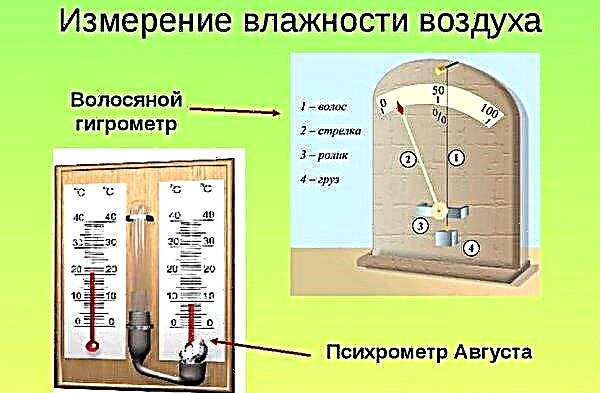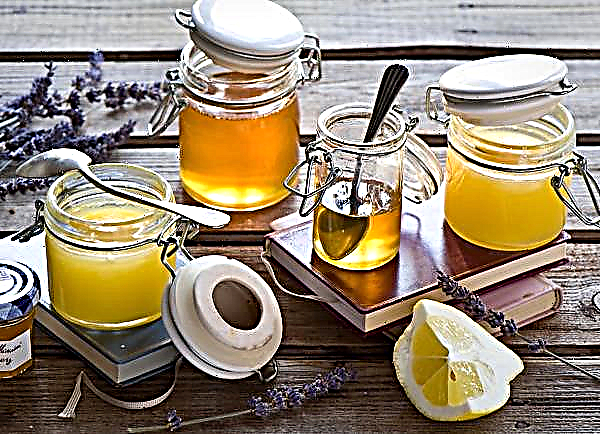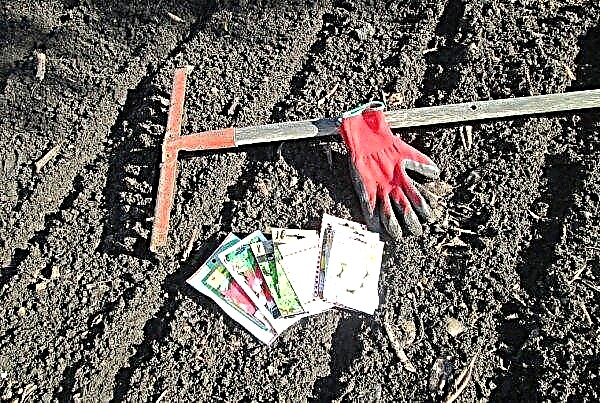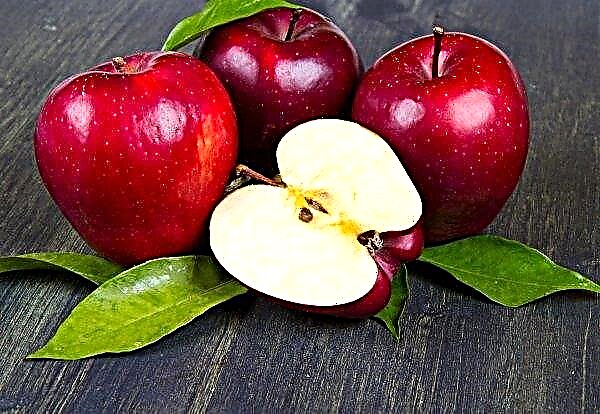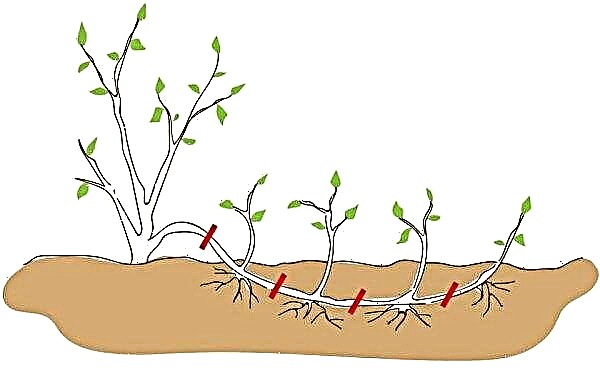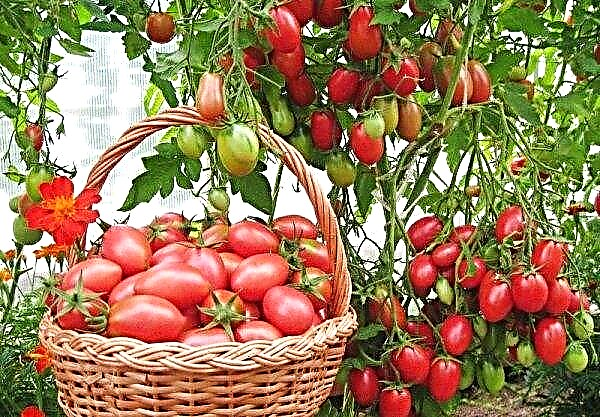Storage of washed potatoes causes a lot of controversy among farmers. Below we consider the question of whether it is possible to wash potatoes before laying for the winter.
Can potatoes be washed before storing?
The fundamental difference, whether potatoes were washed before winter storage or not, does not exist. The main thing is that the products are dried and stored under optimal microclimatic conditions. Accordingly, whether it is necessary to wash the potatoes after digging out of the soil, each gardener decides independently.
Did you know? Boiled potatoes are one of the few products allowed for use in the diet of patients with gastritis. Its consumption reduces acidity in the digestive tract.
Advantages and disadvantages of washed potatoes
To understand whether such a procedure is needed, it is necessary to adequately evaluate its pros and cons, and also to understand whether you can create optimal conditions for high-quality drying of products.
- The advantages of potatoes washed after digging:
- improving the quality of rejection of products - on washed peels, defects that are provoked by mechanical damage, pests or diseases are better visible;
- improving the presentation of tubers;
- facilitating work with tubers in the kitchen - clean potatoes do not get your hands dirty, less dust from it during home storage;
- elimination of fungal bacteria - water washes away most of the bacteria that are part of the microflora of the soil.

- The disadvantages of the method are associated with the complexity of its implementation, especially if there are a lot of tubers:
- a sufficiently large amount of water will be required;
- a large area is needed, on which a drain must be provided to drain excess water, good ventilation and microclimate conditions for drying;
- Harvesting, washing and drying takes much longer than with standard preparation for storage.
Based on the above information, washing potatoes before storage justifies itself only when the crop had to be dug during the rainy season and there is too much dirt on it, or if the crop is very small. In other cases, standard processing is sufficient, since the laboriousness and cost of water, as well as the maintenance of the overall room with optimal microclimate conditions do not justify the goal.
Did you know? Potatoes are used not only in the food industry - from they make glue and produce ethanol.
The best varieties for long-term storage
Not all varieties of potatoes are suitable for long-term storage. Late varieties are best kept.
Several varieties of potatoes, distinguished by good keeping quality:
- Picasso - Dutch mid-late ripening hybrid. Potatoes reach physical maturity 140 days after planting. The table variety is characterized by high productivity - 200–250 kg / ha. Tubers are aligned, weighing an average of 100 g. Creamy flesh, well-digested. Tubers have good taste. Tuber shelf life is 90%.

- Atlant - representative of the Belarusian selection. The tubers reach physical maturity in 120 days. The average weight of potatoes is 110 g. Productivity is 660 kg / ha. The pulp is light yellow, boils heavily. The variety is suitable for making mashed potatoes and baking. Differs in high indicators of durability - 95%.
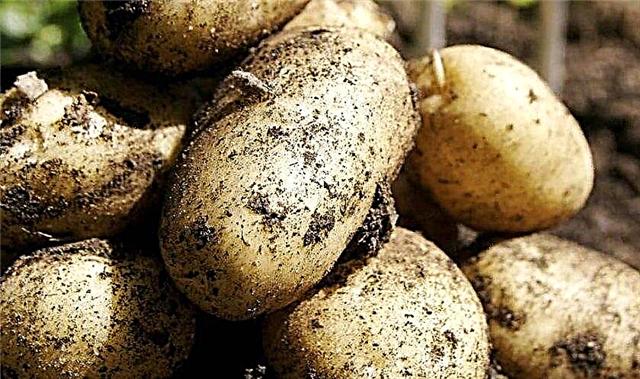
- Vesnyanka - Belarusian variety, ripening in 120 days. Productivity is 200-300 kg / ha. In terms of operation, the variety is universal, suitable for preparing any dishes involving various degrees of heat treatment. The weight of the marketable tuber is about 120 g. The pulp is light yellow, boils well, has an excellent taste. Keeping speed is 94%.
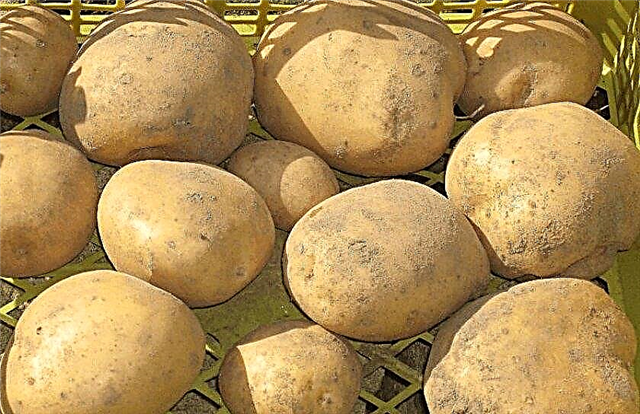
- Slav - variety of Ukrainian selection. Ripens in 120 days. The weight of tubers ranges from 90–250 g. Productivity is 200–300 c / ha. Creamy pulp. Potatoes are suitable for cooking various dishes, including salads. It has good taste characteristics. Keeping speed is 95%.

- Gingerbread man - A variety of table appointments with good taste characteristics. Tubers are aligned, rounded, weigh an average of 130 g. Productivity - 130-250 kg / ha. The pulp is yellow, well boiled. Keeping quality - 98%.
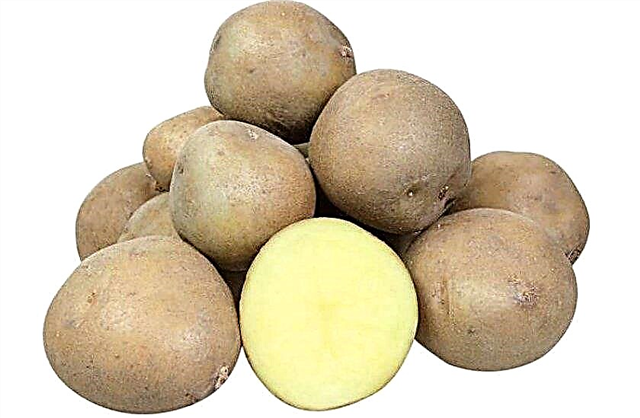
How to prepare potatoes for storage
After the crop is dug up, it is left for several hours right next to the beds.
Then they sort, separately laying out:
- tubers for seeds - small copies of the same size;
- damaged instances;
- tubers for long-term storage.
Seed potatoes are left for several days in a well-lit area for landscaping, then they are put in separate boxes and sent for storage.
Damaged tubers are left for food and feed to livestock. These instances need to be spent as quickly as possible.
Potatoes intended for long-term storage go through the following stages of preparation:Did you know? Potato starch is used to create detergents that cleanse oil wells.
- sorting by size - small ones are stored less than large ones, and more voids are formed between potatoes of the same size, which provides better ventilation and reduces the risk of rotting;
- drying in a dark room with good ventilation for a week;
- re-sorting with the rejection of low-quality, deformed specimens with the removal of excess dirt.
After all the preparatory measures, the crop can be sent for storage.
Optimal storage conditions for potatoes
To preserve the presentation and taste indicators it is necessary to create special microclimate conditions:
- lack of hit of light in the room;
- temperature - +4 ... + 6 ° С;
- humidity - 75–80%.
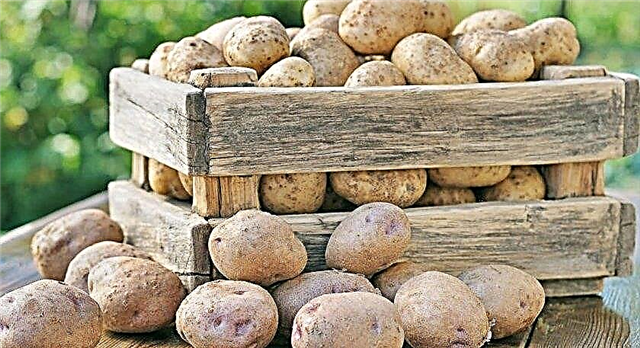
Potato storage methods
There are several ways of storing potatoes, depending on which the level of harvest keeping will change.
In the cellar or basement
Basements are ideal for preserving crops. Under such conditions, it can be stored in boxes or bags. To absorb excess moisture, the products are transferred in layers of straw, sawdust. To protect against pests and bacteria, herbs are placed in bags and boxes. Tubers can also be suspended at a low height in the nets if the room is maintained at a stable temperature throughout the winter period.
Important! The only vegetable that can be stored in close proximity to potatoes is beets. It has the ability to absorb excess moisture secreted by potatoes.
In the basement, it is important to provide reliable protection against frost. If in winter the temperature drops significantly, then the packaging with the products is wrapped with old rags. If necessary, connect heaters.
Before laying in the cellar or basement, it is absolutely necessary to completely disinfect the walls, floor and ceiling. To do this, you can use hydrated lime or a 3% solution of copper sulfate. Processing is carried out 2 weeks before the harvest is transferred to storage. After disinfection, it is necessary to ventilate the room well and thoroughly dry the walls.
In the apartment - on the balcony or loggia
At home, the crop can be stored on the balcony or loggia. In this case, the period of use of the product is reduced by at least a month, depending on climatic conditions. On an unglazed balcony / loggia, tubers can be affected by frost. To protect containers with products, wrap them with cotton blankets, but this does not always save the situation. You can also use light bulbs or a hairdryer. These methods will help protect the crop if frost lasts no more than 2-3 days, and then a thaw sets in - with prolonged cooling, they are not effective.
The storage box on the balcony / loggia should be two-layer. For this, 2 containers of different sizes are selected and placed smaller into a larger one. The gap between the boxes is filled with sawdust or straw. After laying the products, the container is wrapped with a cotton blanket and installed on a hill, for example, a stool or a pallet.
In the pit
A good option for storing tubers in pits. But it is only suitable for preserving a small amount of products that are planned to be used in the spring. Another disadvantage is the insecurity of products from rodents.
For storage in this way you need:
- Dig a trench 1 × 1 m of arbitrary length on a hill, which will not be flooded when a large amount of precipitation occurs and snow melts in the spring.
- Pour tubers with a layer of 80 cm before the onset of frost.
- Fill the remaining space in the pit with straw, branches or needles.
- At the first frost, form a hill from the ground 30 cm high.
When the snow melts, products can be dug up and eaten or used for planting.

Why potatoes are poorly stored: possible mistakes
Products can deteriorate during storage for many reasons:
- excessive application of nitrogen fertilizers during the growing period;
- poor-quality drying after digging;
- neglect of the rules for disinfection of premises before laying products;
- low-quality sorting of potatoes;
- lack of adequate ventilation in the room;
- non-compliance with the rules of food neighborhood - when stored next to other vegetables, potatoes deteriorate much faster;
- excess or lack of moisture in the room.
Important! During storage under any conditions you need periodically spend the rejection of diseased tubers, otherwise the whole potato will become infected, and the yield of the crop will be significantly reduced.
Before laying it for storage, it does not matter if the potatoes were washed or not. The main task of the agrarian is to dry the crop well and create optimal microclimate conditions.








